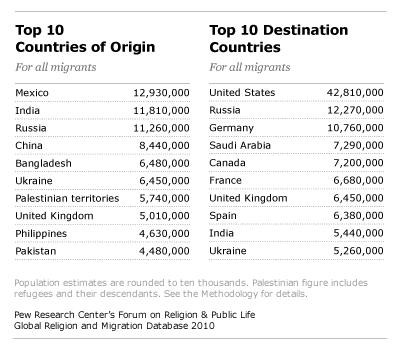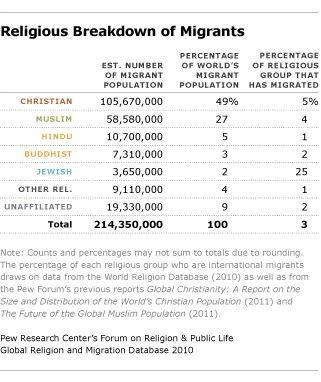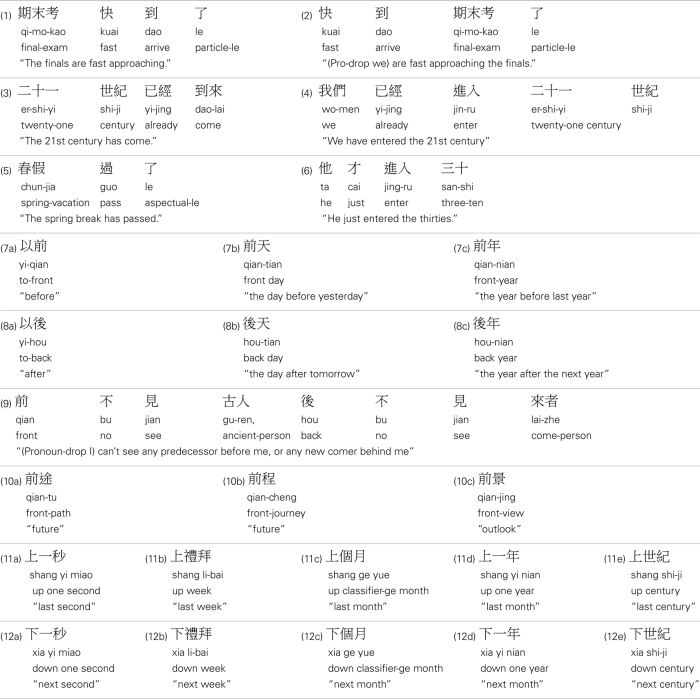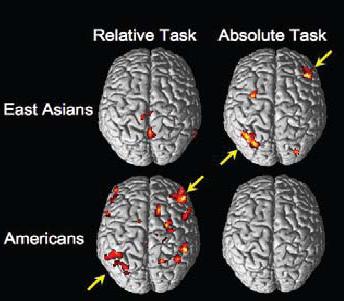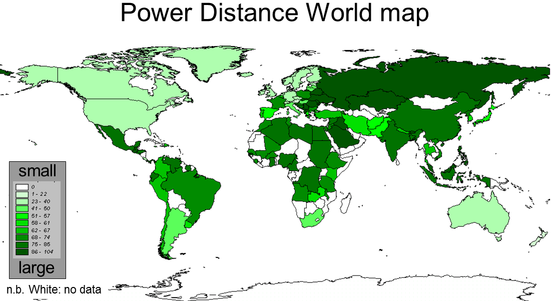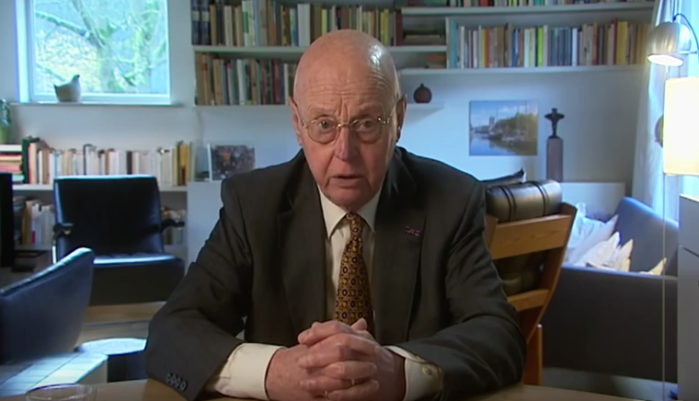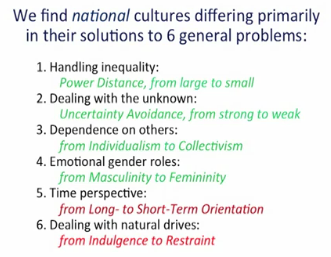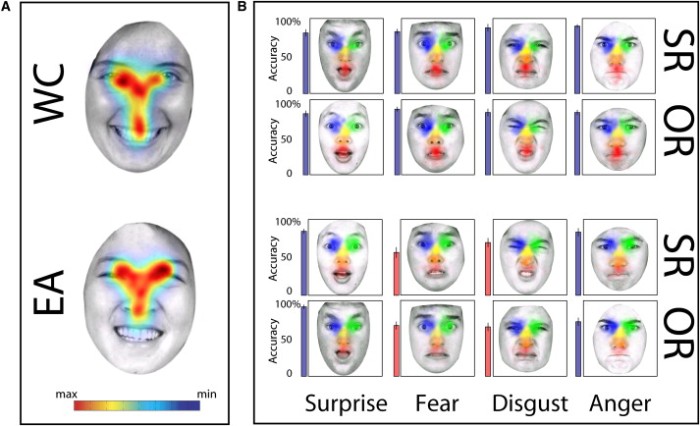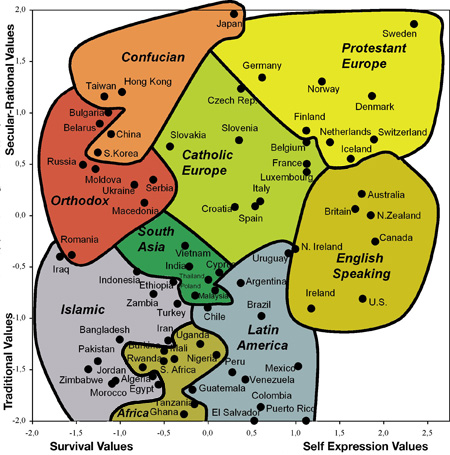Posts Tagged ‘culture’
Individualism-Collectivism and Accountability
Individualism – Collectivism and Accountability in Intergroup Negotiations
.
.
However, for those who place a high emphasis on collectivism, cooperative behavior and harmony with others, especially with persons with whom one is similar, is normative and is likely to ensure positive evaluations in accountable negotiations.
(…)
In the low-accountability condition, those who had high levels of collectivism reported less cooperative intentions and behavior, and achieved lower outcomes, as compared to representatives with low levels of collectivism.
(…)
However, the current research suggests that negotiators’ behavior depends both on the nature of the negotiation situation, as well as on negotiators’ collectivism. Applying this to cross-cultural investigations, this suggests that broad generalizations about the negotiation styles of cultural groups, which does not take situations into account, are likely to be inappropriate.
Read the full essay online or download as pdf.
Michele J. Gelfand / University of Maryland at College Park
Anu Realo / University of Tartu, Estonia
Journal of Applied Psychology , 1999, Vol. 84, No. 5, 721-736 – retrieved 08.12.2011 from http://www.bsos.umd.edu/psyc/gelfand/index.html
.
Cultural Aspects of Information Management in China
Cultural Aspects of Information Management in China (Abstract)
Collectivistic Background
Chinese culture is a collectivist culture which stresses the interdependence and long-term mutual obligations between individuals and organizations. People are expected to follow group values and initiatives. As found in the study of western ecommerce diffusion in China, Chinese people prefer small group based operations with emphasis on long-term relationship, interorganizational collaboration and re-negotiation. Another ecommerce study also indicates that collectivist features like clubs, chat rooms and family themes have a higher percentage occurrence on Chinese websites than on US domestic websites.
Chinese collectivism, however, differs substantially from those prevailing in other Asian countries. They are individualistic collectivism where small group or family value is emphasized, rather than society oriented. In contrast to Japanese society, which may be considered as a block of granite, the Chinese resembles a tray of loose sand, where every grain is a family.
This opinion is consistent with the finding of Martinsons and Westwood (1997) that the Chinese power structure is perhaps best represented by a series of concentric circles or “family” with the patriarch in the center. The traditional family values are emphasized in this circle. The Chinese collectivism can be either an inhibitor or enabler of IS practices. Most information is gathered and processed in Chinese environment is intended to support the top managers of various small circles, which results in many independent systems and data that are hard to integrate or share. Such behaviors actually make Chinese collectivism a negative factor in ERP implementation. From above analysis, Chinese collectivism may be seen as individualistic collectivism.
Hierarchical Power Structure
Chinese management philosophy is characterized by centralized authorities as well as directive and hierarchical structures due to the long power distance and paternalistic tendency. The position of top management in Chinese business is overwhelming. No other champion is needed because such a champion would be seen as a challenge to the authority of top management, which often leads to power conflicts. And both top managers and lower level staffs are not comfortable with empowerment because they are accustomed to the practice that key decisions are made by top management. It is also natural that Chinese business leaders use their authorities to facilitate modifying subordinates behaviors in change management.
Unfortunately, Chinese top managers do not appear to realize the importance of IT and IT management. Consequently, they commit less on IT management. Problem arise when Chinese managers rarely accept knowledge input from their subordinates, and when the IT decisions by top management are seldom made with due consultation with end users This may be helpful to speed up IT decision and IT implementation, but such bureaucratic and arbitrary organizational culture is seen as one important cause of IT project failures.
The hierarchy management structure also helps to explain the correlation between power and information in China. Information control is one of the predominant sources of power in China. Critical information in China is selectively preserved instead of being distributed widely. Information is often treated as an individual property and critical information controlled by individual can be used to preserve discretionary power in Chinese organization. It is quite obvious in e-government practices in China where branches of government purposely hold back some information and obstruct large-scale information sharing in order to keep their power and interests.
Uncertainty Tolerance
Uncertainty tolerance is the extent a person feels comfortable in unstructured situations. It is commonly accepted that there are two different cultures, namely, uncertainty avoiding culture and uncertainty accepting culture.
The former tries to minimize uncertainly by taking strict laws and regulations, or risk control measures. The later tolerates ambiguous situation, and tries to live peacefully with it.
The majority of the studies, however, argue that the Chinese culture is uncertainty tolerant. Martinsons (1997) and Lam et al(2005) show that East Asians, especially Chinese people are more comfortable with unclear information. This corresponds with the informal communication path among Chinese that relies more on personal experience. They keep more information among themselves, rather than explicitly express it. It is common in China that you need to guess the “true” meaning of conversation beside the surface information, because Chinese people like to use allusion to tell something they think you should know and would understand.
Based on authors’ own understanding about uncertainty tolerance as native Chinese, the uncertainty avoidance mentioned in the literature is mainly because of the importance of information for the power, rather than unable to tolerate the uncertainty. So the idea that Chinese culture is uncertainty tolerant is supported. Contrary to the traditional thinking that Chinese people are more conservative in regard to change, the literature demonstrates that Chinese people’s attitude seems to be more positive toward change and towards new technology when they come to experience it.
Both Collis (1995) and Brown et al(1998) conclude that people from China hold more positive attitudes on change and new technologies than those from countries that they compare, namely, UK, US and Japan.
Intuitive Decision Making
The way that Chinese people make decisions or solve problems is relatively unstructured compared with westerners “the Chinese’s decisions are comparatively implicit, relying on analogical and correlative thinking, rather than on rational and analytic thinking”. Although Chinese managers refer to information or data to support decision making process, only a few data analysis is used even when deciding the most important issues.
The entrepreneurial model of strategy making that relies on personal knowledge and intuition rather than objective criteria or formal and quantitative method is dominant in Chinese decision making. Therefore, “the decision making process usually involves few people and takes short time to make”.
The decision making of Chinese people is also characterized to be highly contextual. Regulation and rules may play important role in directing the decision, but in most situations, Chinese people like to adopt “the individual-policy-for-individual-issue approach”, which means that the executors of rules usually can find some room for themselves to make flexible decisions.
Cultural Aspects of IS in China
Xiang-Hua Lu / School of Management, Fudan University
Michael S H Heng / National University of Singapore
Download the full pdf here.
The PACIS (Pacific Asia Conference on IT Systems) has tons of other interesting material and is worth a visit.
.
The I Ging – structure in East Asian Collectives (Natural Order)
This Matrix defines the Relationship Layer (Ranking/Relation) and the Appeal Layer (Distance/Approach). Still many Asian companies follow this structure.
.
Download an introduction to Hofstede`s theories as pdf here.
.
Religion and Income in the USA
How economically successful are different religions in the USA?
 (retrieved 05.01.2013 at http://www.pewforum.org/Income-Distribution-Within-US-Religious-Groups.aspx)
(retrieved 05.01.2013 at http://www.pewforum.org/Income-Distribution-Within-US-Religious-Groups.aspx)
Get the full survey “Income Distribution Within U.S. Religious Groups” online here, or download pdf there.
~
Immigrants and their income in the US 2010
~
Immigrant’s Top Ten Countries or Origin and the Top Ten Destination Countries 2010
Religious Breakdown of Migrants 2010
(retrieved 05.01.2013 at http://www.pewforum.org/geography/religious-migration-united-states.aspx)
Read the whole survey “Faith on the Move” online here or download pdf there.
.
(reviewed 05.01.2013)
Mapping the Global Muslim Population
(…) A comprehensive demographic study of more than 200 countries finds that there are 1.57 billion Muslims of all ages living in the world today, representing 23% of an estimated 2009 world population of 6.8 billion. While Muslims are found on all five inhabited continents, more than 60% of the global Muslim population is in Asia and about 20% is in the Middle East and North Africa. However, the Middle East-North Africa region has the highest percentage of Muslim-majority countries. Indeed, more than half of the 20 countries and territories1 in that region have populations that are approximately 95% Muslim or greater. More than 300 million Muslims, or one-fifth of the world’s Muslim population, live in countries where Islam is not the majority religion. These minority Muslim populations are often quite large. India, for example, has the third-largest population of Muslims worldwide. China has more Muslims than Syria, while Russia is home to more Muslims than Jordan and Libya combined.
Of the total Muslim population, 10-13% are Shia Muslims and 87-90% are Sunni Muslims. Most Shias (between 68% and 80%) live in just four countries: Iran, Pakistan, India and Iraq. (…)
Source: http://www.pewforum.org/Mapping-the-Global-Muslim-Population.aspx
PEW- Forum: http://www.pewforum.org/
Or click here.
Laotse and Confucius – Fundamental Traits in Asian Thinking
(…) Nor can it be said truly that a pure-blooded Chinese could ever quite disagree with Chuangtse’s ideas. Taoism is not a school of thought in China, it is a deep, fundamental trait of Chinese thinking, and of the Chinese attitude toward life and toward society. It has depth, while Confucianism has only a practical sense of proportions; it enriches Chinese poetry and imagination in an immeasurable manner, and it gives a philosophic sanction to whatever is in the idle, freedom- loving, poetic, vagabond Chinese soul. It provides the only safe, romantic release from the severe Confucian classic restraint, and humanizes the very humanists themselves; therefore when a Chinese succeeds, he is always a Confucianist, and when he fails, he is always a Taoist. As more people fail than succeed in this world, and as all who succeed know that they succeed but in a lame and halting manner when they examine themselves in the dark hours of the night, I believe Taoist ideas are more often at work than Confucianism. Even a Confucianist succeeds only when he knows he never really succeeds, that is, by following Taoist wisdom. (…)
With special thanks to Milanda: The Chuang Tzu, translated by Yutang Lin at http://terebess.hu/english/chuangtzu.html
Gabor Terebess runs a nice online database with many relevant works about the Tao wich is definitely worth a visit.
Download the Chuang Tzu as pdf here.
Download the The Analects of Confucius 論語 as pdf here or read online at http://www.acmuller.net/con-dao/analects.html
.
(reviewed 02.10.2013)
The Differences between Taoism, Buddhism and Shenism (“Chinese Folk Belief”)
The Difference between Taoism, Buddhism and Shenism
(…) Chinese folk religion retains traces of some of ancestral primal religious belief systems such as animism and shamanism, which include the veneration of (and communication with) the Sun, the Moon, the Earth, the Heaven and various stars, as well as communication with animals. It has been practiced by the Chinese people for thousands of years, and since the start of the Common Era alongside Buddhism, Taoism and various other religions.
Rituals, devotional worship, myths, sacred re-enactment, festivals and various other practices associated with different folk gods and goddesses form an important part of Chinese culture today. The veneration of secondary gods does not conflict with an individual’s chosen religion, but is accepted as a complementary adjunct, particularly to Taoism.
Some mythical figures in folk culture have been integrated into Chinese Buddhism, as in the case of Miao Shan. She is generally thought to have influenced the beliefs about the Buddhist bodhisattva Guanyin. This bodhisattva originally was based upon the Indian counterpart Avalokiteshvara. Androgynous in India, this bodhisattva over centuries became a female figure in China and Japan. Guanyin is one of the most popular Bodishisattvas to which people pray. (…)
Read the full article online here or download pdf here.
(retrieved 17.01.2014 at http://interfaithnet.wordpress.com/world-religions-spiritual-traditions-2/chinese-traditional-religions/)
~
(…) To distinguish “Shenists” from Taoists and Buddhists is to ignore the reality that it is not possible to define any Chinese belief system as it is practised today as one with a uniform, discreet set of values.
Here’s why: The act of Chinese ancestral and deity worship predates history. China’s first official religion – really more of a “thought system” – was Taoism, believed to be founded by the legendary philosopher, Lao Zi, over 2000 years ago.
Even then its practice was split three-ways: philosophical, religious and popular Taoism, with the latter two belief systems incorporating aspects of folk religion such as ancestral spirits, divination, and sorcery. Then came Buddhism, which was introduced to China in the Han Dynasty, about 200 AD, around the same time Taoism became the nation’s official religion. Buddhism was thus intertwined with Taoism from the start. Its scriptures were translated using Taoist vocabulary; records show Buddhism at the time was described as a kind of “foreign Taoism”.
The switcheroo went both ways. In competing for the public’s attention, Taoist leaders followed the Buddhists’ example and built monasteries and temples. They also adopted their ideas of vegetarianism and prohibited alcohol. The mix finally coalesced during the Song Dynasty, when Taoism, Buddhism and Confucianism were patched together resulting in the state-endorsed Neo-Confucian philosophy, which lasted roughly between 960 and 1280 AD.
(…)
Venerable Shravasti Dhammika, an Australian who lives in Singapore and is the advisor to the Buddha Dhamma Mandala Society, is right in that the worship of Chinese folk gods and spirits has nothing to do with the original, philosophical teachings of Lao Zi or the Buddha.
(…)
Here is some more about Shravasti Dhammika: http://www.buddhistelibrary.org/library/profile.php?aapath=17
Interesting comment on this article from Jeremy Shiu (extract):
(…) Chinese folk belief is based on the structure of Taoism. E.g, looking at talisman practices in ‘Chinese belief’/Chinese Folklore; we can see the dominance influence is Taoism. Chinese belief – literature and novels like – Journey to the west, Feng Shen Bang etc, although some are ‘degrading’ Taoism, but nonetheless the key structure is still very much Taoist – e.g, in Journey to the West, its background is set on Jade Emperor’s Heavenly administration(Celestial Heaven). Look at the ‘gui ren zhi’ (joss paper) in ‘Chinese folk beliefs’ and it is clearly a form of Taoist talisman (by the writings, pictures etc). (…)
Read the full article online here or download pdf here.
(retrieved 17.01.2014 at http://archive.is/awfj)
~
Chinese folk religion
(…) The ”’Chinese folk religion”’ or ”’Chinese traditional religion”’ ( or 中国民间宗教 or 中国民间信仰 / Zhōngguó mínjiān zōngjiào or Zhōngguó mínjiān xìnyăng), sometimes called ”’Shenism”’ (pinyin: ”Shénjiào”, 神教).
The term ”’Shenism”’ (神教, ”Shénjiào”) was first used in 1955 by anthropologist Allan J. A. Elliott, in his work ”Chinese Spirit-Medium Cults in Singapore”.
During the history of China it was named ”’Shendao”’ (神道, ”Shéndào”, the “way of the gods”), apparently since the time of the spread of Buddhism to the area in the Han period (206 BCE–220 CE), in order to distinguish it from the new religion. The term was subsequently adopted in Japan as ”Shindo”, later ”Shinto”, with the same purpose of identification of the Japanese indigenous religion. The oldest recorded usage of ”Shindo” is from the second half of the 6th century. is the collection of grassroots ethnic religious+ traditions of the Han Chinese+, or the indigenous religion of China+.Lizhu, Na. 2013. p. 4. Chinese folk religion primarily consists in the worship of the ”shen” (神 “gods”, “spirits”, “awarenesses”, “consciousnesses”, “archetypes”; literally “expressions”, the energies that generate things and make them thrive) which can be nature deities, city deities or tutelary deities of other human agglomerations, national deities, cultural+ hero+es and demigods, ancestors and progenitors, deities of the kinship. Holy narratives regarding some of these gods are codified into the body of Chinese mythology. Another name of this complex of religions is ”’Chinese Universism”’, especially referring to its intrinsic metaphysical perspective.
The Chinese folk religion has a variety of sources, localised worship forms, ritual and philosophical traditions. Among the ritual traditions, notable examples includes Wuism and Nuoism. Chinese folk religion is sometimes categorized inadequately as “Taoism”, since over the centuries institutional Taoism has been assimilating or administering local religions. Zhengyi Taoism+ is especially intertwined with local cults, with Zhengyi ”daoshi” often performing rituals for local temples and communities. Faism, the tradition of the ”fashi” (“masters of rites”), inhabits the boundary between Taoism and folk religion. Confucianism advocates worship of gods and ancestors through proper rites, which have an ethical importance. Taoism in its various currents, either comprehended or not within the Chinese folk religion, has some of its origins from Wuism.Libbrecht, 2007. p. 43. Chinese religion mirrors the social landscape, and takes on different shades for different people.Wolf, Arthur P. “Gods, Ghosts, and Ancestors.” ”Religion and Ritual in Chinese Society.” Ed. Arthur O. Wolf. Stanford: Stanford University Press, 1974. pp. 131-182. (…)
Read the full article online here or download as pdf here.
(retrieved 24.04.2014 at http://shelf3d.com/i/Chinese%20folk%20religion)
~
“Temple Oracles in a Chinese City” – A Study of the Use of Temple Oracles in Taichung, Central Taiwan” written by JULIAN PAS
“A sample from the Kuan Yin oracles occasionally but by no means exclusively found in Buddhist temples” (Julian Pas)
Get the shortened text only version or see the full pdf with drawings.
~
Journey to the West by Wu Cheng-en
A mix of Buddhist, Taoist and Shenist dieties appear in the the “Journey to the West” (16th century):
(…) The Jade Emperor then ordered all the gods of the Department of Thunder to split up and invite the Three Pure Ones, the Four Emperors, the Five Ancients, the Six Superintendents, the Seven Main Stars, the Eight Points of the Compass, the Nine Bright Shiners, the Ten Chiefs, the Thousand Immortals, and the Ten Thousand Sages to a banquet to thank the Buddha for his mercy. Then he ordered the Four Great Heavenly Teachers and the Nine Heavenly Maidens to open the golden gates of the jade capital, and Palace of the Great Mystery, and the Tong Yang Jade Palace, invite the Tathagata to take his seat on the Throne of the Seven Precious Things, arrange the places for all the different groups of guests, and set out the dragon liver, phoenix bone−marrow, jade liquor, and magic peaches. (…)
Read the full Text online here or download as pdf there.
(received 05.01.2013 at http://china.usc.edu/%28S%28fa5usj55v1e04q554ndbtt45%29A%28AH44v1t4zQEkAAAAMDc3YzcxOGMtNjc2My00NDZjLTk1ZTItOTU0Nzg1OWE3MDlkwRet7Hje9mO7FUYef0YNyayi_Ks1%29%29/ShowArticle.aspx?articleID=2213&AspxAutoDetectCookieSupport=1)
~
Shenism in the 21st Century
Offerings made to the ancestors including modern computer equipment at the Chinese Qingming Festival. It is the Shenist equivalent of the Christian All Souls’ Day (Commemoration of All the Faithful Departed / Feast of All Souls).
See also Qingming Festival: Dealing with death in the 21st century by Runhong Zhang for more information (source: Meanwhile in China).
(retrieved 08.04.2013 at http://www.6park.com/news/messages/20227.html)
.
(reviewed 17.01.2014)
Hofstede`s Cultural Onion
Gerard (Geert) Hendrik Hofstede (born 3 October 1928) created the model of the „Cultural Onion“
Unfortunately, the nice intercultural website where I got the pic from was closed down: http://homepages.rtlnet.de/krkarwoth/priorities.html (retrieved 28.08.2009, disappearance noticed 22.11.2012). Sorry for this.
It is made of 3 layers around a core. The core stands for the values of a certain culture, which is not moving a lot. It mostly remains the same. Even if something seems to be outdated, it still can subconsciously play a role in the present. That includes individuals as well as groups.
~
The first layer around the core is described as rituals. A ritual can be the way of personal hygiene (most Asians shower in the evening, Europeans in the morning). German people like to shake hands often, Malay tenderly touch the fingertips and then point it to the heart. Those rituals are changing slowly.
~
The second layer around the core are the „heroes“. A hero can be a fictive person, but has influence on the culture. A nice example is Dracula (written by Bram Stoker, published 1897). Since this book was published, many people in Western world developed a fear about Vampires, even if it never existed in their culture before. It also can be national heroes, photo-models or scientists – all people, who play a role-model in that society.
~
The third layer is about the symbols. Nowadays most symbols appear as brands like BMW, Apple or Louis Vuitton. Those symbols usually move according to the momentary fashion.
~
All three layers can be trained and learned through practices except for the core: the inner cultural values (Good vs. Bad, dirty vs. clean, ugly vs. beautiful, unnatural vs. natural, abnormal vs. normal, paradoxical vs. logical, irrational vs. rational).
For further information about the core, please refer to The Core of Hofstede’s Onion Model.
~
Hofstede also developed the Model of the 5 Cultural Dimensions https://laofutze.wordpress.com/2010/01/09/hofstedes-cultural-dimensions-2/
Download an introduction to Hofstede`s theories as pdf here or see further info about Hofstede at https://laofutze.wordpress.com/category/hofstede/
Practical approaches of Hofstede’s theories see at https://laofutze.wordpress.com/2010/01/08/applications-of-hofstedes-theories/
.
reviewed 13.09.2013
Basic Anthropological Theories – Morgan / Boas
Basic Anthropological Theories
There are two fundamental approaches to a different culture, represented by L.H. Morgan (1818-1881) and Franz Boas (1858-1942).
.
Morgan believed in an evolution of cultures: a ladder, on which all cultures climb up or down. This thought was the beginning of Western anthropology.
L.H. Morgan (1818-1881)
http://oechoe.blogspot.com/2010/04/lewis-henry-morgan.html / Oetjhoe von Boegh
~
.
Boas tried to explain different cultures from their own background. Hall and Hofstede use different parameters or indices for comparing different cultures.
Franz Boas (1858-1942)
Frans Boas Projekt http://www.franz-boas.de/content/index.php?n=7&c=71
~
.
Additional Material
Universal Human Rights, Cultural Relativism and the Asian Values Debate
(…) Cultural relativism is the position to which local cultural traditions (religious, political and legal practices included) properly determine the existence and scope of civil and political rights enjoyed by individuals in a given society. It is premised on the idea that all cultures are equally valid and that standards of evaluation are internal to traditions. It sees that values emerge in the context of particular social, cultural, economic and political conditions and therefore vary enormously between different communities. However, the language of cultural relativism is often exploited by various state leaders and high officials to justify and rationalise repressive policies, despite such policies having no philosophical or cultural justification. The paradox of cultural relativism is that participation is necessary to understand what values are legitimate within a society, but that the rhetoric associated with cultural relativism helps effectively hinder any participation or freedom of thought within a given society. This lies at the heart of the problem of effectively implementing universal human rights. (…)
Community values are (…) consistently highlighted as a typical Asian value and are posited against the Western value of individualism. However, there are ambiguities about the definition of community. In political discourses, one often sees the community collapses into the state and the state collapse into the regime. When equations are drawn between the community, state and the regime, criticisms of the regime become crimes against the nation-state, the community and the people. This conceptual manoeuvre allows the dismissal of individual rights that conflict with the regime’s interests. At the same time, this view denies the existence of conflicting interests between the state and communities in an Asian nation or society. (…)
Patrick Chin-Dahler is currently studying a Bachelor of Asia-Pacific Studies (Honours) at the Australian National University.
Read the full article online at the East Asia Forum or download pdf here.
.
updated 01.01.2011
Culture Influences Brain / Cultural Differences in Perception
Partly incorporated by the later post Arrow, Circle, Spiral and Cylinder – Different Conceptions of Time and History: Culture influences Brain
.
MIT imaging shows culture influences brain function
Asians and Westeners had to answer questions about absolute quantities (is, is not, how many?) or relative qualities (bigger than, higher than, more red than,…)
It became obvious, that Western people have to spend more energy to render relative judgments (bigger than, lower than, …) than Asians. Vice versa it showed, that Asians needed more energy rendering absolute judgments (is or is not).
~
IMAGE / TREY HEDDEN, MCGOVERN INSTITUTE FOR BRAIN RESEARCH
TechTalk by MIT (Mass. Institute for Technology), volume 52, No. 14 (30.01.2008), J. Gabriell and T. Hedden from the Mc Govern Institute
Download the full pdf here, the article is on page 4 below.
.
.
How Asians and Westerners look at Faces
.
~
(…) Western society is very individualist. Asian societies are much more collectivistic (…) Western approach to facial recognition is piece-by-piece and intimate. The East Asian approach is both more formal and holistic: peripheral information is gathered
(…). We tested some Chinese who had been in Glasgow for three or four years, and you see a clear difference between them and those who just arrived (…). That really demonstrates that it’s not genetic. It’s experience. (…)
Retrieved 14.01.2011 from http://www.wired.com/wiredscience/2008/08/culture-shapes/
.
Read the full research article “Culture Shapes How People See Faces” online here or download as pdf here.
.
Citation: Blais C, Jack RE, Scheepers C, Fiset D, Caldara R (2008) Culture Shapes How We Look at Faces. PLoS ONE 3(8): e3022. doi:10.1371/journal.pone.0003022 Editor: Alex O. Holcombe, University of Sydney, Australia Received June 12, 2008; Accepted July 30, 2008; Published August 20, 2008 Copyright: ß 2008 Blais et al. This is an open-access article distributed under the terms of the Creative Commons Attribution License, which permits unrestricted use, distribution, and reproduction in any medium, provided the original author and source are credited. Funding: This study was supported by The Economic and Social Research Council and Medical Research Council (ESRC) (RES-060-25-0010). REJ was supported by a PhD studentship awarded by ESRC (PTA-031-2006-00192), CB by a PhD studentship provided by the Fonds Que ́cois de Recherche en Nature et Technologies ́be (FQRNT) and DF by a FQRNT post-doctoral fellowship. Competing Interests: The authors have declared that no competing interests exist. * E-mail: r.caldara@psy.gla.ac.uk, retrieved 14.01.2011 from http://www.plosone.org/article/info%3Adoi%2F10.1371%2Fjournal.pone.0003022
.
How Asians and Westerners look at Emotions (Facial Expressions are not universal)
.
Here, we report marked differences between EA (East Asians) and WC (Western Caucasian) observers in the decoding of universal facial expressions. EA observers exhibited a significant deficit in categorizing ‘‘fear’’ and ‘‘disgust’’ compared to WC observers. Also, WC observers distributed their fixations evenly across the face, whereas EA observers systematically biased theirs toward the eye region. A model observer revealed that EA observers sample information that is highly similar between certain expressions (i.e., ‘‘fear’’ and ‘‘surprise’’; ‘‘disgust’’ and ‘‘anger’’). Despite the apparent lack of diagnostic information, EA observers persisted in repetitively sampling the eye regions of ‘‘fear,’’ ‘‘disgust,’’ and ‘‘anger.’’
Download the .pdf here or online here.
Cultural Confusions Show that Facial Expressions Are Not Universal
Cultural Confusions Show that Facial Expressions Are Not Universal – Rachael E. Jack,, Corresponding Author Contact Information, E-mail The Corresponding Author, Caroline Blais, Christoph Scheepers, Philippe G. Schyns, and Roberto Caldara,, Corresponding Author Contact Information, E-mail The Corresponding Author, 1Department of Psychology, University of Glasgow, Glasgow G12 8QB, Scotland, UK, 2Centre for Cognitive Neuroimaging (CCNi), University of Glasgow, Glasgow G12 8QB, Scotland, UK, 3Départment de Psychologie, Université de Montréal, Montreal, PQ H3C 3J7, Canada ,Received 12 May 2009; revised 12 July 2009; accepted 13 July 2009. Published online: August 13, 2009. Available online 13 August 2009.
Current Biology – Volume 19, Issue 18, 29 September 2009, Pages 1543-1548: retrieved 19.02.2011 under http://www.sciencedirect.com/science?_ob=ArticleURL&_udi=B6VRT-4X0FH86-5&_user=10&_coverDate=09%2F29%2F2009&_rdoc=1&_fmt=high&_orig=search&_origin=search&_sort=d&_docanchor=&view=c&_acct=C000050221&_version=1&_urlVersion=0&_userid=10&md5=afe59a73a6b115faacec22215d993939&searchtype=a
.
The Stroop Effect on Morphosyllabic (Asian) and Alphabetical Readers (Western)
Stroop Effect
(1) No interference: Green Red Blue Purple Blue Purple (2) Interference: Blue Purple Red Green Purple Green
In psychology, the Stroop effect is a demonstration of the reaction time of a task. When the name of a color (e.g., “blue,” “green,” or “red”) is printed in a color not denoted by the name (e.g., the word “red” printed in blue ink instead of red ink), naming the color of the word takes longer and is more prone to errors than when the color of the ink matches the name of the color. The effect is named after John Ridley Stroop who first published the effect in English in 1935. The effect had previously been published in Germany in 1929. The original paper has been one of the most cited papers in the history of experimental psychology, leading to more than 700 replications. The effect has been used to create a psychological test (Stroop Test) that is widely used in clinical practice and investigation.
(Wikipedia, retrieved 08.01.2011)
.
.
Stroop Effect on Morphosyllabic and Alphabetical Readers
.
~
Twenty-three Chinese and 24 German undergraduate students were tested in a Stroop paradigm with the following stimuli: color patches, color-neutral words (e.g., friend printed in yellow), incongruently colour-associated words (e.g., blood printed in blue), and incongruently colour words (e.g., yellow printed in blue). Results revealed no differences in German and Chinese students’ response times to colour patches. Chinese participants, however, showed longer colour naming latencies for neutral words as well as for colour words and colour-related words. No differences between German and Chinese participants were found when print colour latencies for neutral words were subtracted from print colour latencies for colour words and colour-related words. This result does not support theories which suggest that for morphosyllabic readers there is a direct route from orthography to the semantics of a word. We rather argue, with reference to dual route models of reading, that access from print to phonology is faster for morphosyllabic than for alphabetic readers, and therefore interference caused by conflicting phonologies of colour name and written word will be stronger in Chinese readers than in German readers.
HENRIK SAALBACH and ELSBETH STERN / Psychonomic Bulletin & Review 2004, 11 (4), 709–715 / Max Planck Institute for Human Development, Berlin, Germany
Download the full pdf here.
See “How Language influences our Thinking” or “Choosing a foreign Name” or search the Category “Language“.
.
Updated 14.01.2011
influences brain function
Cultural Maps of the World
The Inglehart-Wetzel Cultural Maps of the World
~
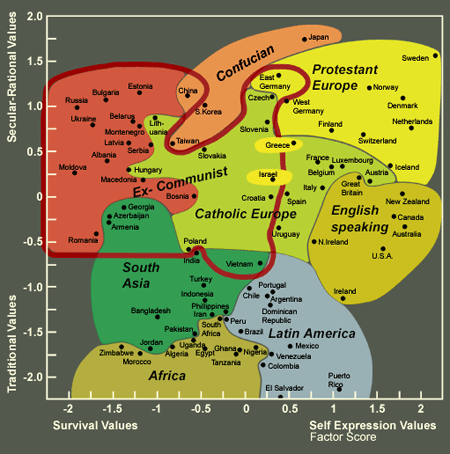
The World Value Survey Cultural Map 1999-2004
~
The World Value Survey Cultural Map 2005-2008
Check out for more at http://www.worldvaluessurvey.org/
(retrieved 12.07.2013 at http://www.worldvaluessurvey.org/wvs/articles/folder_published/article_base_54)



